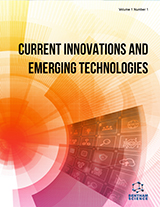Abstract
Building Information Modelling (BIM) is not yet adopted in Sri Lanka. Improving the BIM awareness within the industry and beyond is a significant challenge in a BIM infant industry. BIMLab Network research group centred at the University of Moratuwa was the only active organization which has taken steps to increase the BIM awareness in the country at the time of writing. Besides, a wide variety of BIM software is made available by software vendors. Selection of software applications is primarily affected by the features of the software and the affordability. However, due to need of efficient information sharing and interoperability, the BIM Software Environment (BIMSE) would first affect the selection of software; or the selection of team members will depend on what software they use. Therefore, the decision of BIMSE becomes critical. Active involvement of Information and Communication Technology Agency (ICTA) of Sri Lanka would significantly change the context so that preferred BIMSE would shift to HSE. However, BIM is not in current ICTA agenda. An effort to convince ICTA of the benefit the country could receive by implementing BIM would become a significant leap in BIM adoption in the country.


 Download PDF Flyer
Download PDF Flyer














